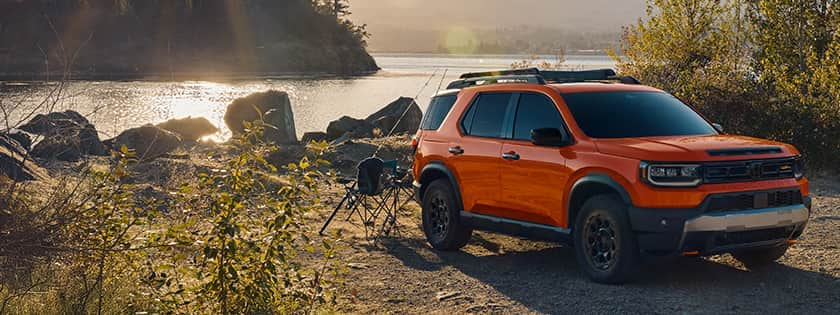If you ever caught The Jetsons, there’s a solid chance you imagined a future where cars soared above the streets. While science fiction did influence reality in some ways — almost everybody carries computers in their pockets in the form of smartphones — we still don't have fully electric flying cars.
At least not yet.
Although some pioneering entrepreneurs are refining the concept, technical challenges and a whole host of regulatory issues mean they're not in mainstream production. There are some prototypes, but you won’t be taking to the skies in your sedan anytime soon.
The concept of electric flying cars
If you’ve ever been in the middle of a huge traffic jam, or even just driven down a road that felt a bit too narrow, you’ve probably fantasized about pushing a button and taking off the ground. That’s pretty much the elevator pitch for flying cars.
How would they take off with limited space? Many prototypes are based on vertical takeoff and landing (VTOL) technology, meaning they wouldn’t need a long runway to get into the air.
Better yet, technological advancements have made all-electric prototypes viable. Although early ideas for flying cars used the same kind of internal combustion engine (ICE) technology as older cars, technological advancements have made electric prototypes viable.
The current state of development
While entrepreneurs have been working on flying cars for many years, we're unlikely to see any go on sale anytime soon. If and when they do go into mass production, it'll be a long time before they're seen on the average person's driveway.
Some manufacturers have made impressive progress in recent years. In 2021 Klein Vision demonstrated the AirCar — a flying car using a traditional BMW engine, with folding wings that take about three minutes to move between flying and driving configurations. Since then, several other manufacturers have shown off prototypes of their vehicles, with many of them being fully electric, including:
Doroni H1-X: This is a fully electric car with semi-autonomous navigation and a top speed of 120 mph. Working prototypes already exist, and the manufacturers hope to deliver the Doroni H1-X vehicle to consumers by 2026.
Samson Switchblade: A street-legal vehicle that you can drive to the airport and then fly like a plane, the Samson Switchblade is classed as an experimental aircraft. Owners are required to build at least 51% of the vehicle themselves. Preorders are already available for those daring enough to try.
AeroHT modular flying car: This eVTOL vehicle features a ground module that transports and recharges the more compact air module. The company showed a working prototype in 2023 and hopes to begin mass production in 2025.
Perhaps the most exciting prospect right now is the Alef Model A. This flying electric vehicle looks almost like an oversized drone and recently became the first flying electric vehicle to receive approval from the FAA. Alef aims to release the vehicle with a sticker price of about $300,000, making it less expensive than some luxury ground vehicles.
The rise of electric flying taxis
As appealing as the idea of a flying car is, most people don't have a pilot's license, so it's unlikely we'll all be flying freely by ourselves in the next year or two. However, we could be letting other people fly for us.
Flying taxis, such as the VoloCity air taxi, offer a chance to skip the traffic and travel between major transport hubs such as train stations and airports. These airborne vehicles would travel in lower airspace than traditional commercial aircraft and stick to specific routes, offsetting some of the safety concerns surrounding general-access air travel.
While electric flying cars for the masses remain a pipe dream, the idea of flying taxis is far more practical. So much so that Brazilian plane manufacturer Embraer has gotten in on the action, and the UK's Civil Aviation Authority is already working on the authorization process for these vehicles, aiming to allow piloted flights by 2026 and autonomous (but still manned) flights by 2030.
Challenges and obstacles
Whenever a new technology is invented, there's a period where engineers iron out the bugs and lawmakers look at how that technology fits in with current regulations. Flying vehicles are no exception, and we've got a lot of work to do before the technology can be considered mature.
Safety and regulatory concerns
Safety was a serious issue in the early days of civil aviation. The sky is a big open space, and early pilots never envisioned a day when the skies would be so crowded that mid-air collisions were a serious threat. That all changed in June 1956, when United Airlines Flight 718 and Trans World Airlines Flight 2 collided midair above the Grand Canyon. Many of the safety precautions that are in place for commercial flights today were inspired by that incident.
Current plans for electric flying taxis will involve operating at lower altitudes than other aircraft and on carefully defined routes, offsetting some safety concerns. Should VTOL planes that are almost as affordable as cars ever become a reality, we'll need to reevaluate our current airspace and safety regulations to accommodate a world where anyone can purchase a plane.
Technical and infrastructure limitations
While some parts of the world have wide, open streets, flat roads, and lots of spaces that could be converted into landing pads, that isn't the case everywhere. Many parts of the U.S. have hills, tall buildings and winding streets. Using an electric flying vehicle in those areas wouldn't be easy or safe without an incredible amount of skill and expertise.
In addition, while current prototypes of electric flying cars have high top speeds, they can only stay in the air for a short time. If range anxiety is already an issue for some electric car owners, being caught with a low battery while flying would be even worse. Battery technology would need to improve dramatically to increase range and safety.
Potential benefits and impacts
Should electric flying cars become a reality, they have the potential to improve travel and transportation in many ways:
Lower emissions: A transition to electric vehicles means those living near busy roads/airways won't be as exposed to emissions. The power still needs to come from somewhere and may not always come from green sources, but at least the emissions aren't all being blown directly into the street where your children are playing.
Faster travel to rural areas: The ability to skip roads and travel in a straight line to your destination saves time and makes rural areas more accessible.
For people who grew up watching science fiction shows that showed off flying cars, teleporters and replicators, the idea of being able to jump in a vehicle you own and "take off" is incredibly exciting. Unfortunately, until technology catches up to the vision of flying cars, reality will likely be less glamorous than anything we could imagine.
Electric flying cars will play a part in our future
Electric flying cars may not overtake the number of traditional cars on our roads in the next few years, but they may become an important part of how we get around in our lifetimes.
We're living in a time of rapid technical advancement, and that brings with it technical and regulatory challenges. Engineers must address questions about weight and battery life, while lawmakers consider how to keep us all safe when there are more vehicles in the air.


 by
by  edited by
edited by 


